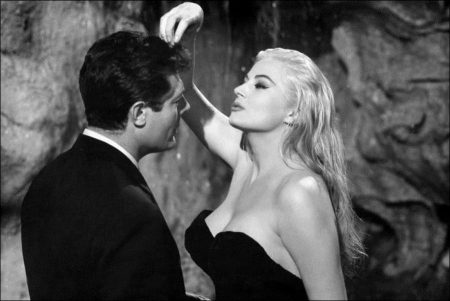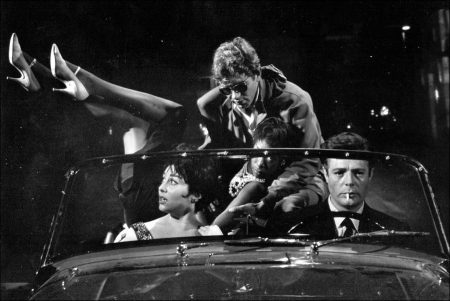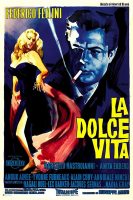Taglines: The world’s most talked about movie today!
La Dolce Vita describes the modern degeneration and sophisticated depressions of Roman urban life from the eyes of a journalist who pursues high society. The young journalist Marcello Rubini lives with the dream of creating a real work; however, he cannot give up the money and prestige provided by the newspaper he works for.
He spends his days in Rome’s most fashionable street, Via Veneto, chasing the next scandal. Marcello continues to live this son sweet life ğı to the end, which she does not actually enjoy, even when she is blown away in a world full of sex, drinks, parties and realms. His is a soulless and unexcited being.
La Dolce Vita Italian for “the sweet life” or “the good life”) is a 1960 Italian drama film directed and co-written by Federico Fellini. The film follows Marcello Rubini (Marcello Mastroianni), a journalist writing for gossip magazines, over seven days and nights on his journey through the “sweet life” of Rome in a fruitless search for love and happiness. La Dolce Vita won the Palme d’Or (Golden Palm) at the 1960 Cannes Film Festival and the Oscar for Best Costumes. The film was a massive box office hit in Europe with 13,617,148 admissions in Italy and 2,956,094 admissions in France.
Filming Locations
Most of the film was shot at the Cinecittà Studios in Rome. Set designer Piero Gherardi created over eighty locations, including the Via Veneto, the dome of Saint Peter’s with the staircase leading up to it, and various nightclubs. However, other sequences were shot on location such as the party at the aristocrats’ castle filmed in the real Bassano di Sutri palace north of Rome. (Some of the servants, waiters, and guests were played by real aristocrats.)
Fellini combined constructed sets with location shots, depending on script requirements—a real location often “gave birth to the modified scene and, consequently, the newly constructed set.” The film’s famous last scenes where the monster fish is pulled out of the sea and Marcello waves goodbye to Paola (the teenage “Umbrian angel”) were shot on location at Passo Oscuro, a small resort town situated on the Italian coast 30 kilometers from Rome.
Fellini scrapped a major sequence that would have involved the relationship of Marcello with Dolores, an older writer living in a tower, to be played by 1930s Academy Award-winning actress Luise Rainer. If the director’s dealings with Rainer “who used to involve Fellini in futile discussion” were problematic, biographer Kezich argues that while rewriting the screenplay, the Dolores character grew “hyperbolic” and Fellini decided to jettison “the entire story line.”
The scene in the Trevi Fountain was shot over a week in winter: in March according to the BBC, in late January according to Anita Ekberg. Fellini claimed that Ekberg stood in the cold water in her dress for hours without any trouble while Mastroianni had to wear a wetsuit beneath his clothes – to no avail. It was only after the actor “polished off a bottle of vodka” and “was completely pissed” that Fellini could shoot the scene.
La Dolce Vita (1961)
Directed by: Federico Fellini
Starring: Marcello Mastroianni, Anita Ekberg, Anouk Aimée, Yvonne Furneaux, Magali Noël, Alain Cuny, Nadia Gray, Annibale Ninchi, Valeria Ciangottini, Evelyn Stewart, Audrey McDonald
Screenplay by: Federico Fellini, Ennio Flaiano, Tullio Pinelli, Brunello Rondi
Production Design by: Piero Gherardi
Cinematography by: Otello Martelli
Film Editing by: Leo Catozzo
Costume Design by: Piero Gherardi
Music by: Nino Rota
MPAA Rating: None.
Distributed by: Astor Pictures Corporation
Release Date: April 19, 1961
Visits: 142


